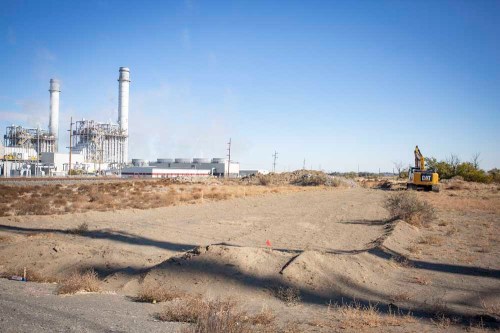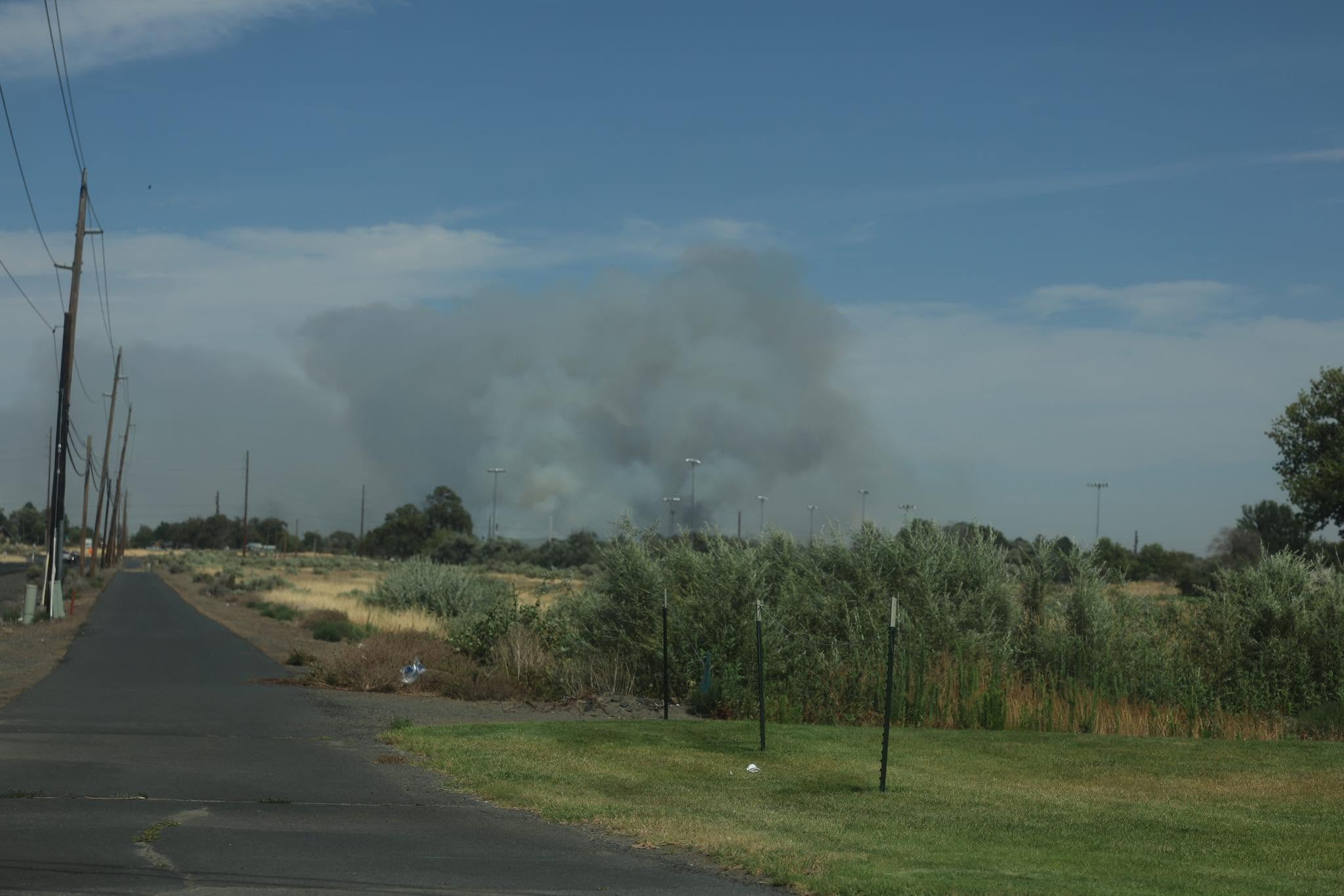Perennial Power Holdings ceases construction of proposed 415-megawatt natural gas power plant
Published 7:00 am Saturday, April 17, 2021

- A cleared section of dirt marks the beginnings of a roadway on the site of the future Perennial Wind Chaser plant on Oct. 22, 2020.
HERMISTON — Perennial Power Holdings has abandoned plans to build a natural gas power plant outside of Hermiston amid litigation brought by environmental groups.
Columbia Riverkeeper and Friends of the Columbia Gorge announced on Tuesday, April 15, that counsel for the Perennial Wind Chaser Station, a proposed 415-megawatt natural gas power plant, sent an email to the Multnomah County Circuit Court on April 5 stating the project would cease construction and the company would ask the Energy Facility Siting Council to terminate the project’s state-issued permit.
“We think this is a huge win for the climate,” said Erin Saylor, an attorney for Columbia Riverkeeper. “Hopefully it shows developers that Oregon is just not a place for new fossil fuel infrastructure.”
The subject of the groups’ lawsuit, Perennial-WindChaser LLC, is a wholly owned subsidiary of Perennial Power Holdings. Perennial Power Holdings did not return an email requesting confirmation of its plans to cancel the project.
Court records available online regarding the lawsuit do not include the letter, but do note that a hearing on the company’s motion to dismiss the lawsuit was canceled on April 6 as “stipulated by parties.”
The hearing on April 6 would have presented oral arguments before the Multnomah County Circuit Court, where Columbia Riverkeeper and Friends of the Columbia River Gorge had filed a petition for judicial review against Perennial and the Oregon Department of Energy.
The groups alleged the state violated its own rules by allowing Perennial to begin construction without obtaining proper permits and approval from the Energy Facility Siting Council, which is staffed by the ODOE.
Critics say the company rushed to begin construction and meet the regulatory deadline to avoid millions of dollars in emissions fees under Gov. Kate Brown’s latest executive order on climate change.
The plant would have emitted more than 1 million tons of greenhouse gases per year, according to news reports, making it one of the state’s largest sources of greenhouse gas emissions. Only a few other power plants produce more.
Saylor said that environmental health in Eastern Oregon will benefit from Perennial’s decision to abandon the project.
“Not just the greenhouse gas emissions associated with it, but all the particulate matter and other associated pollutants that would have come out of this facility are not going to be happening now,” she said.
And for Hermiston residents, Saylor said the change means that “their city won’t become a dumping ground for these plants.”
The project was proposed in an area outside of Hermiston near where two gas power plants currently stand — the Hermiston Power Project, owned and operated by Calpine Corporation, and the Hermiston Generating Project. Perennial Power Holdings is a co-owner and operator of Hermiston Generating Project, a 474-megawatt natural gas plant.
In an interview with the East Oregonian in 2015, David Daley, speaking as Perennial Power Holdings’ senior vice president of operations and development, said while the proposed Perennial Wind Chaser project was a natural gas plant, its primary goal was to support renewable energy in the area. The plant would be able to power up in as little as 10 minutes, he said, as a way to quickly and reliably backfill other sources of energy when, for example, the wind stops blowing at an Eastern Oregon wind farm.
The project received its site certificate from the Energy Facility Siting Council in 2015, but it finally broke ground in September 2020, when developers started clearing land for a road at the site to meet a regulatory deadline.
According to the lawsuit filed by Columbia Riverkeeper and Friends of the Columbia Gorge, Perennial would have to reapply for a new site certificate from EFSC if it did not begin construction on the project by Sept. 23, 2020. To meet that deadline, Perennial began construction of a road despite not having a required stormwater permit from the Department of Environmental Quality.
Jennifer Kalez, communications director for Oregon Department of Energy, told the East Oregonian in October 2020 that DEQ could choose to take enforcement action against Perennial for being out of compliance with its rules, but that the permit was not one of the “preconstruction” conditions that Perennial was required to meet in order to meet EFSC’s Sept. 23, 2020, deadline.
The project was the last of several proposals for new gas-fired power plants in Oregon that have been canceled over the past five years, and now, “no proposals to build any new gas-fired power plants in Oregon remain pending with” the state, according to environmentalists.
Saylor said it’s “very likely this will be the last proposed gas-fired power plant that we see in Oregon” because of the political and social climate and clean energy bills moving through the Oregon Legislature.
“Just five years ago, several proposals for new gas-fired power plants threatened to harm air quality in the Columbia River Gorge and exacerbate climate change, but public opposition to each of these projects has prevailed,” said Nathan Baker, an attorney for Friends of the Columbia Gorge. “We hope and expect that Oregon’s future begins today, free of new fossil fuel power plants, which are dirty dinosaurs of a bygone era.”









